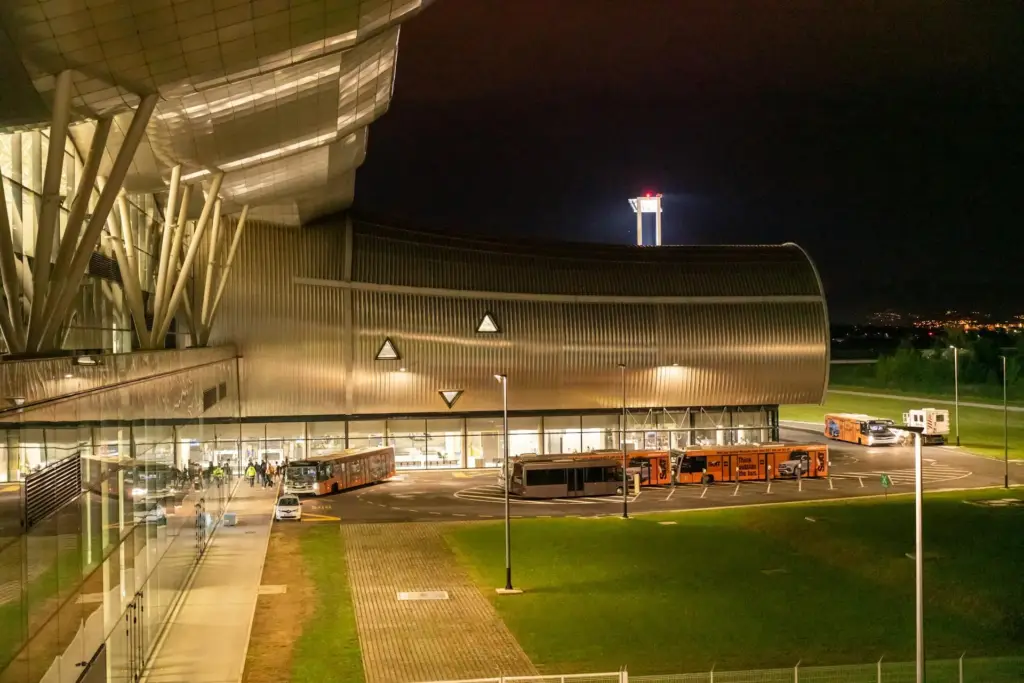The AI in Public Transport is transforming the way we move around cities. This technology is improving operational efficiency, optimizing routes and adjusting schedules in real time. As cities grow, mobility demands also increase, making it essential to adopt innovative solutions such as artificial intelligence.

Route Optimization
One of the most important applications of IA in Public Transportation is route optimization. AI makes it possible to analyze large amounts of data, such as traffic, passenger demand and mobility patterns. With this information, systems can adjust routes to reduce travel times, avoid congestion and improve the user experience.
For example, transportation platforms use AI to modify bus or train routes based on real-time demand. This not only improves punctuality, but also reduces fuel consumption and thus pollutant emissions.
Real-Time Schedule Adjustment
Another key advantage of AI in Public Transport is the ability to adjust schedules dynamically. AI systems can anticipate delays, identify traffic bottlenecks, and modify departure and arrival times. This allows users to have accurate and up-to-date information on the availability of services.
Thanks to AI, transport companies can adjust the frequency of buses or trains according to demand at different times of the day. This is especially useful during peak hours, improving efficiency and reducing waiting times.
Operational Efficiency
AI in Public Transportation is also driving significant improvements in operational efficiency. Artificial intelligence-based systems can predict vehicle wear and tear, schedule preventive maintenance and reduce downtime. This ensures that vehicles are always in top condition, avoiding unexpected failures and delays.
In addition, AI helps companies better manage their fleets by monitoring vehicle performance in real time and optimizing resource allocation. This predictive capability also enables better management of operating costs, improving the profitability of the transportation system.
Monitoring and Security
Security is another area where AI in Public Transport is making a difference. AI-based surveillance systems can monitor stations, buses and trains, detecting unusual or dangerous behavior. This technology enables proactive action, improving safety for both passengers and employees.
In addition, AI is also used to better manage access and avoid overcrowding at stations and stops. This is crucial in times of crisis, such as during a pandemic, to ensure social distance and health safety.
Reducing Environmental Impact
The AI in Public Transport not only improves efficiency, but also helps reduce environmental impact. By optimizing routes and adjusting schedules, vehicles can operate more efficiently, consuming less fuel and reducing carbon emissions. This is vital for cities looking to reduce their ecological footprint and promote more sustainable transportation.
Artificial intelligence also allows electric transportation systems to be managed more effectively, optimizing energy use and ensuring that vehicles are always charged and ready to operate.
User Experience
The AI in Public Transport not only benefits companies, but also passengers. By optimizing travel times and providing real-time information, the user experience is greatly improved. AI-based mobile apps allow users to know accurate vehicle arrival times and plan their routes more efficiently.
In addition, some public transport systems are implementing AI solutions to provide personalized recommendations to passengers, such as suggestions for alternative routes or information on nearby services.
The Future of AI in Public Transportation
The future of AI in Public Transport is promising. Over time, we will see even more sophisticated systems that will enable greater integration between different modes of transportation, such as buses, trains and bike sharing. This will foster smoother and more efficient mobility in cities, improving both the quality of life for citizens and the urban environment.
In addition, the use of AI in autonomous vehicles promises to completely revolutionize public transportation. Autonomous buses and trains, controlled by AI systems, could operate without human intervention, ensuring greater safety and efficiency.
Conclusion
Conclusion
In summary, AI in Public Transport is marking a fundamental shift in the way we move around cities. From optimizing routes and schedules to improving safety and operational efficiency, artificial intelligence is driving smarter and more sustainable transportation. As this technology continues to evolve, public transportation will become more accessible, efficient and environmentally friendly, improving the lives of millions of people around the world. Services such as drivin are already using artificial intelligence in their software solutions.

